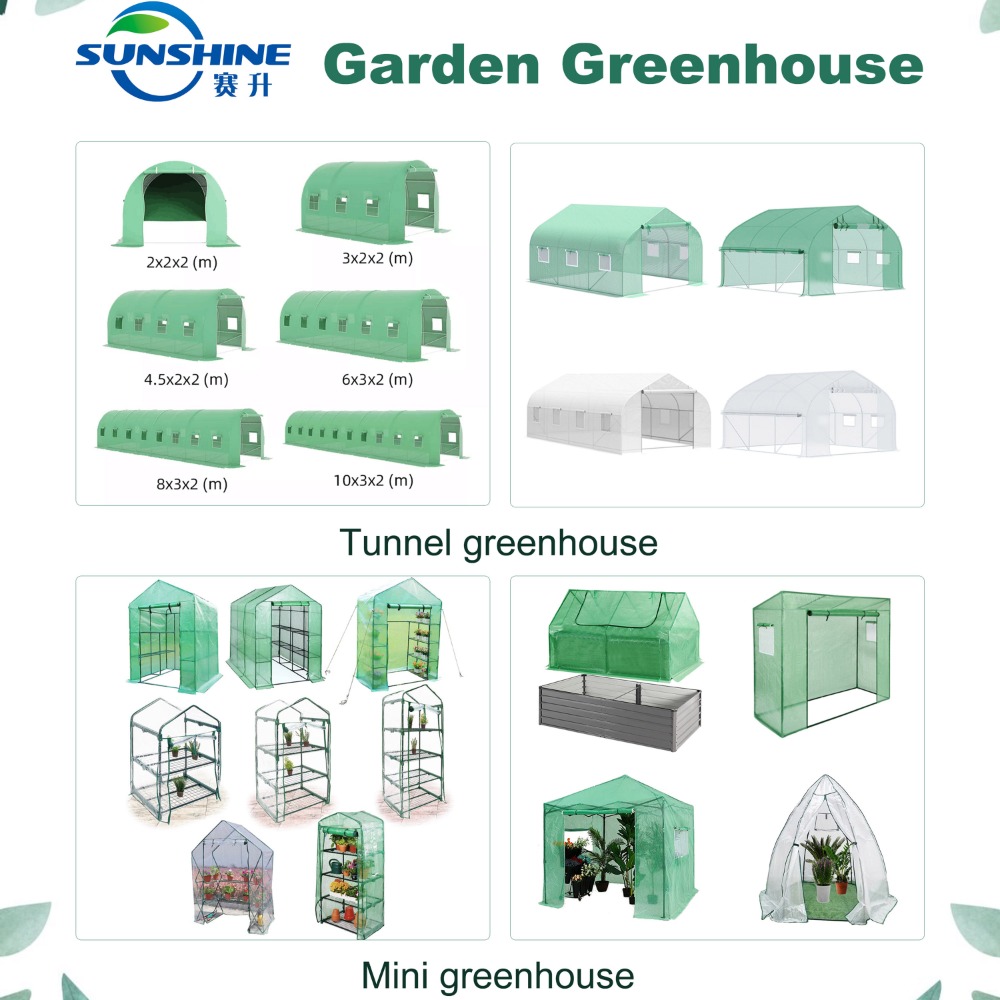The transparent plastic film and the knitted polyethylene shading net used in the small greenhouse are two materials with completely different functions. The core difference between them lies in their main functions: one is to collect and retain heat, while the other is to reflect and dissipate heat.
1. Transparent plastic film (Polyethylene Film)
Material and structure: It is usually made by blow molding from continuous polyethylene sheets, and the surface may be coated with various functional additives.
Key Type:
- Regular PE film: Basic model, prone to forming water droplets on the inner wall, which affects light transmission.
- Anti-drip film: Highly recommended. The inner surface is treated with anti-drip agent, preventing water droplets from condensing into drops but allowing them to form a water film and flow down the wall. This helps maintain high light transmittance and reduces plant diseases caused by water droplet falls.
- Insulation film: Equipped with infrared ray barrier agent, it can better prevent heat loss at night and offers a good insulation effect.
Applicable scenarios:
- In winter, plants protect themselves from frost and maintain their warmth for overwintering.
- Planting earlier in early spring or later in late autumn can create the suitable growth temperature.
- During the rainy season, it is necessary to prevent the soil and plants from being washed away by the rain.
2. Knitted Polyethylene Shade Cloth
Material and Structure: Made by weaving polyethylene threads together, it features uniform mesh holes. It is usually produced by the "knitting" process, which is less prone to thread breakage and deformation compared to the "weaving" process.
Key type: Functions are mainly distinguished by color and density:
- Black net: The commonly used, with good sun protection and cooling effects, and a high cost-performance ratio.
- Green Net: Besides providing shade, it also focuses on regulating photosynthesis (filtering certain light spectrums) and has a good aesthetic appearance.
- Silver-gray mesh/aluminum foil mesh: The shading and reflective capabilities are the strongest. It not only blocks sunlight but also reflects away some light and heat through its silver-gray surface, providing the good cooling effect. At the same time, it has the effect of repelling aphids.
- Light-blocking rate: For example, "three-needle shading net" has a light-blocking rate of approximately 50-60%, while "six-needle shading net" has a light-blocking rate of approximately 70-90%. The larger the number, the denser the mesh, and the greater the light-blocking effect.
Applicable scenarios:
- During summer, provide shade and protection from direct sunlight for plants that are shade-loving and sensitive to excessive exposure (such as hydrangeas, ferns, and some succulents).
- Reduce the temperature inside the greenhouse to prevent plants from being burned by high heat.
- Used as a windbreak net, it reduces the physical damage caused by strong winds to plants.
Summary and Recommendations
You can understand it this way:
- The transparent plastic film is like a winter coat, used for keeping warm.
- The sunshade net is like a summer sun protection shirt and a breathable hat, used for cooling and sun protection.
Practical suggestion:
Good gardeners will change the "clothes" of their greenhouse as the seasons change.
- Winter mode: Use transparent plastic film to retain the warmth of every ray of sunlight.
- Summer mode: Use knitted polyethylene shading net, which is ventilated and breathable, to drive away the intense heat.
I hope this detailed comparison will help you better understand and apply these two materials!


 英语
英语 俄语
俄语 德语
德语 西班牙语
西班牙语 法语
法语


.jpg?imageView2/2/w/800/h/800/format/webp/q/75)
.jpg?imageView2/2/w/800/h/800/format/webp/q/75)
.jpg?imageView2/2/w/800/h/800/format/webp/q/75)
.jpg?imageView2/2/w/800/h/800/format/webp/q/75)
.jpg?imageView2/2/w/800/h/800/format/webp/q/75)

-1.jpg?imageView2/2/w/800/h/800/format/webp/q/75)
.jpg?imageView2/2/w/800/h/800/format/webp/q/75)
-1.jpg?imageView2/2/w/800/h/800/format/webp/q/75)
.jpg?imageView2/2/w/800/h/800/format/webp/q/75)
-1.jpg?imageView2/2/w/800/h/800/format/webp/q/75)
-1.jpg?imageView2/2/w/800/h/800/format/webp/q/75)
